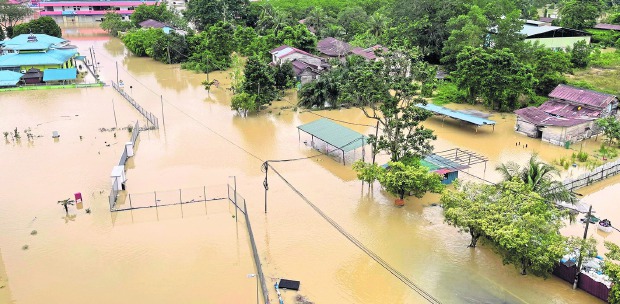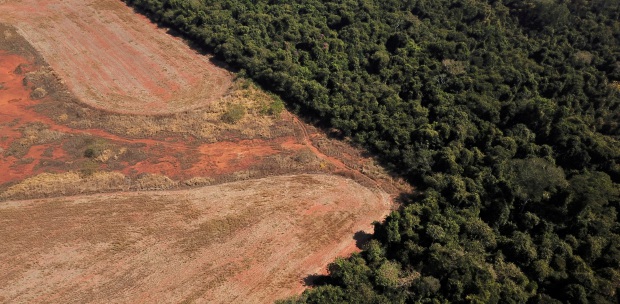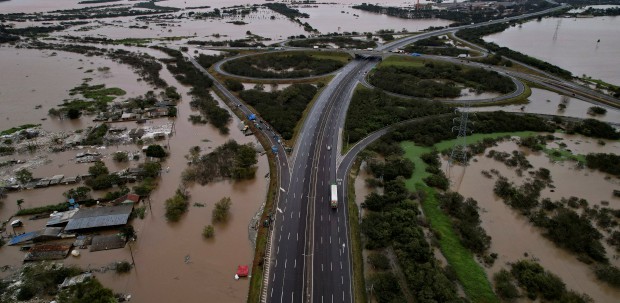WITH its coastal forests, sugarcane farms and sweeping beaches, South Africa's Durban might appear to be an ideal spongy city, one capable of absorbing water, which can be useful in combatting flood disasters and drought.
But when flooding hit Durban in April last year, it destroyed homes, damaged roads and bridges, and washed away entire families, leaving the city with a death toll of more than 500.
One year later, green experts are highlighting the importance of using what cities already have, such as parks and rivers, to reduce risks, and figuring out what else they need to be as resilient as possible as climate change threats intensify.
A city's ability to absorb water, referred to as its sponginess, is one key to withstanding climate shocks, environmental researchers say, with sponginess dependent on the amount of greenery and other water storage available.
But sponginess is just a starting point, they say, noting that policies, funding and infrastructure to protect communities are equally important in building resilience against future weather-related disasters.
That includes things like prioritising better drainage, improving urban planning and public messaging, and ensuring good governance is in place.
"You can have as much sponginess as you want, but if people are forced to live within flood plains, (their homes) are going to be damaged," said Matthew Phillips, a senior water engineer with global design firm Arup, which does research on the issue.
From the drought in Somalia to recent flooding in Indonesia, experts warn that such natural disasters will become more frequent as emissions from burning fossil fuels such as gas, oil and coal keep rising.
The term sponge cities was coined in 2013 by Kongjian Yu, an architect and professor at Peking University, to describe cities using nature-based solutions to absorb and retain water, as opposed to concrete infrastructure to channel it away.
Arup uses satellite imagery, artificial intelligence and machine learning to calculate a city's sponginess rating, ranging from 1 to 100 per cent.
The company calculates how much urban surface area is covered by "blue and green infrastructure", including grass, trees, ponds and lakes, and how much is covered in grey infrastructure, such as concrete, pavement and buildings.
Its digital mapping tool allows cities to gauge the best use of available space, from rainwater harvesting to ponds and inner-city gardens, to boost sponginess, and to determine the risks of not doing so.
Arup's 2022 sponginess report examined five African cities — Cairo, Durban, Kigali, Lagos and Nairobi — with Durban earning the second highest sponginess rating at 40 per cent.
By comparison, more developed and wealthy cities such as London and Sydney scored 22 and 18 per cent, respectively.
Cities with more high-rise buildings, tarmac roads and pavements have often expanded and urbanised at the expense of their natural resources, climate experts say.
Developing cities, meanwhile, have the potential to grow while preserving nature.
Natural ways of absorbing urban water were about 50 per cent more economical than man-made solutions, and were 28 per cent more effective, according to research by Arup and the World Economic Forum.
Despite the spotlight on natural infrastructure, experts at Arup said sponginess levels should be seen only as a starting point for evaluating a city's climate resilience.
Non-native plant species can end up absorbing more water than indigenous plants, but that can lead to low water availability during times of drought.
When Durban flooded last April, alien plants with a very shallow root system ripped up soil in the river corridors, eventually blocking the downstream drains and roads, he said.
The local municipality is
now working with communities to remove non-native plant species and litter from about 7,400 km of riverbanks so that the river is able to absorb more water.
Another important resilience factor for governments to consider is housing and infrastructure, said Arup's researchers.
The Durban floods displaced about 40,000 people.
Arup researchers have pinpointed about 1,600 factors that help or hinder water resilience, including leadership, finances, governance, infrastructure and healthy ecosystems, to build guidelines to help cities implement resilience plans.
The writer is from the Reuters news agency





